Abstract art continues to shape visual culture, home décor trends, and the global art market in 2025. The genre no longer depends on recognizable imagery. Instead, it focuses on color, gesture, pattern, and emotion. Many collectors search for the best abstract art because it works across interiors, communicates personal taste, and stays visually timeless. The movement began more than a century ago and remains a core part of modern and contemporary aesthetics. This list highlights ten works from different eras, including classics and newer pieces made by popular abstract artists whose work influences museums, galleries, and digital platforms in 2025. Each example is chosen for its artistic value, historical importance, and cultural impact rather than auction price or hype. Ultimately, this list illustrates how abstraction remains forward-looking across every generation.
Wassily Kandinsky was one of the first famous abstract artists to eliminate recognizable subjects. His large painting Composition VII is held in major public collections and shows shapes colliding in rhythm and color instead of realism. The piece blends movement, line, and layered brushwork. The forms feel musical, aligning with Kandinsky’s belief that painting carries a sound-like energy. Many historians consider this work a turning point in European Modernism, influencing early exhibitions in Munich and later non-objective art in the United States.

Kazimir Malevich created one of the most radical paintings of the 20th century. His Suprematist Composition: White on White is a landmark in the collection of the Museum of Modern Art (MoMA). He stripped painting down to a tilted white square on a white ground. This minimalism defined Suprematism, supporting a global shift toward pure geometric abstraction and influencing design, architecture, and conceptual painting.

Piet Mondrian moved to the U.S. during World War II and developed bright grid-based rhythms. His painting Broadway Boogie Woogie, also in the MoMA collection, reflects the city’s movement and jazz culture. Small squares pulse like lights and streets. Mondrian’s method shaped Bauhaus design, mid-century graphics, and branding, proving abstraction can capture a city without depicting it directly.
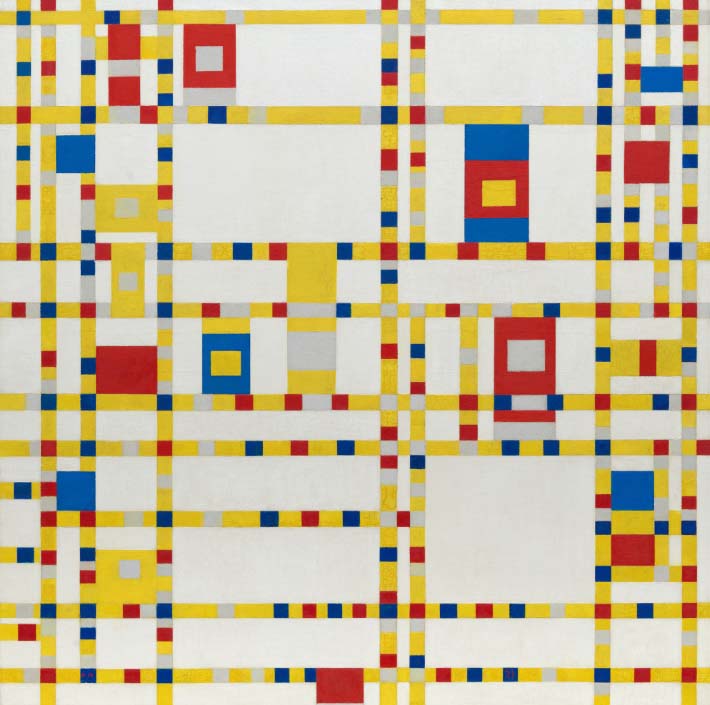
Mark Rothko became known for color-field abstraction: floating shapes with softened edges. No. 14 is featured in major collections including the San Francisco Museum of Modern Art (SFMOMA). Viewers report emotional responses—calm, sadness, reflection. Rothko designed his works as immersive experiences, explaining why museums install them with controlled lighting and silence.
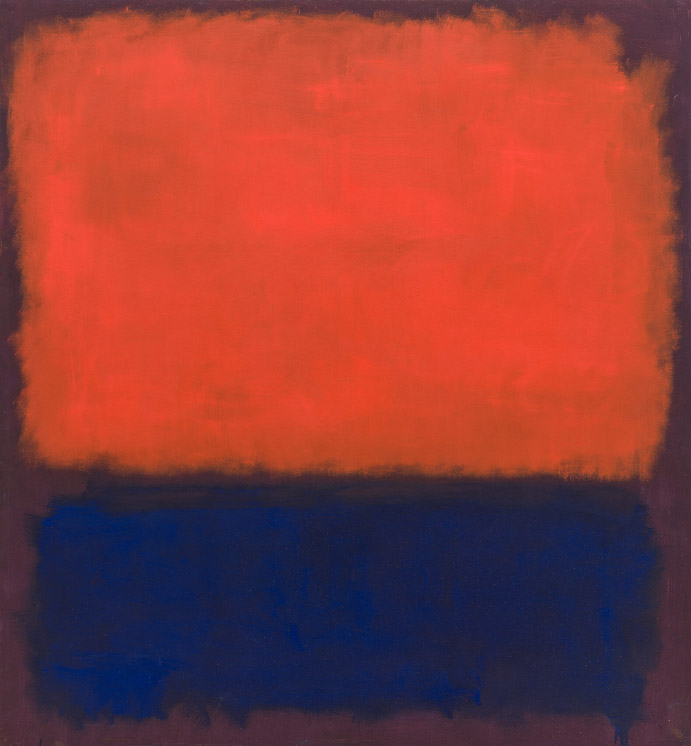
Jackson Pollock introduced drip painting and helped define Abstract Expressionism. Blue Poles is part of the National Gallery of Australia collection. Layered splashes and bold vertical poles show both spontaneity and control. Pollock changed the act of painting by placing canvases on the floor and using physical movement instead of traditional brushwork.
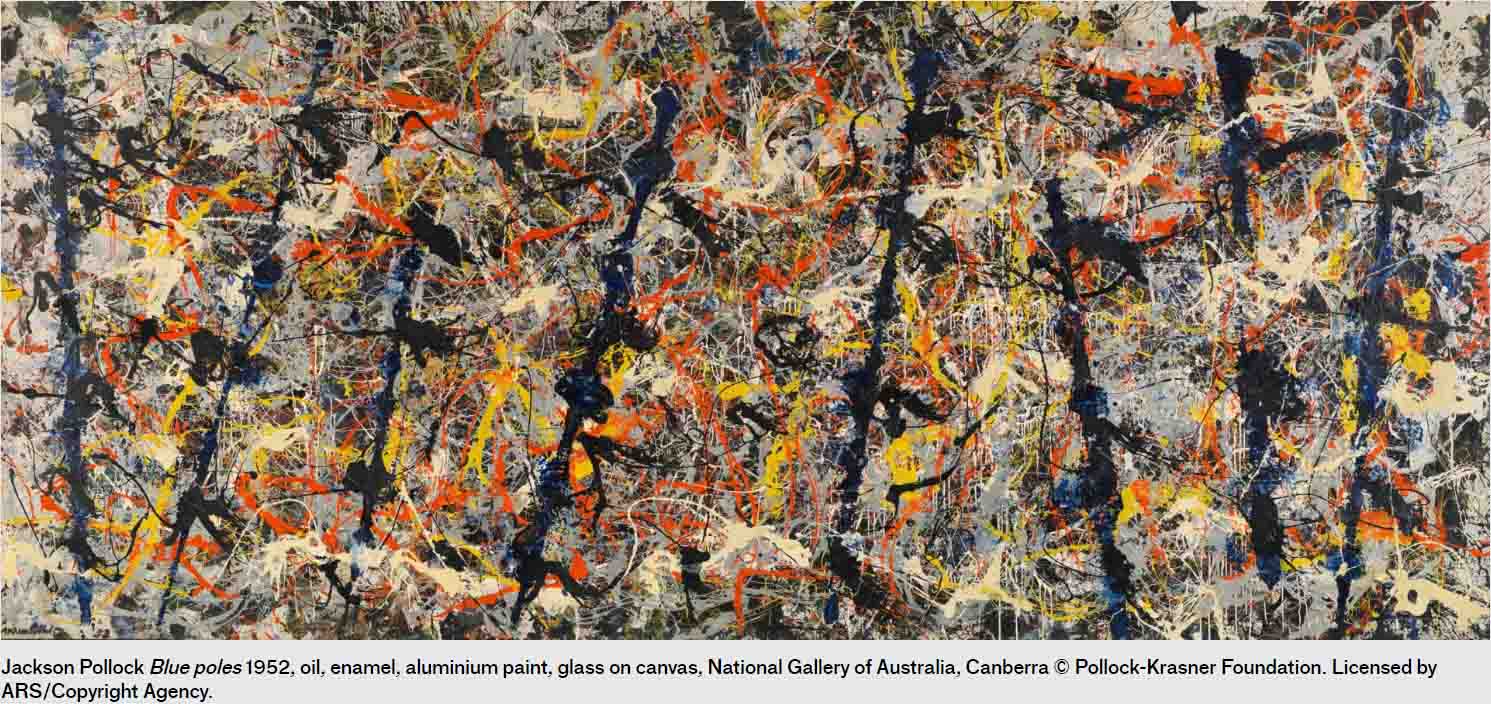
Helen Frankenthaler pioneered the soak-stain method, pouring thin paint onto raw canvas so pigment soaked into the fibers. Mountains and Sea, held in the National Gallery of Art, Washington, appears airy and translucent. The technique influenced Color Field painters such as Morris Louis and Kenneth Noland and expanded what abstract painting could look like in post-war America.
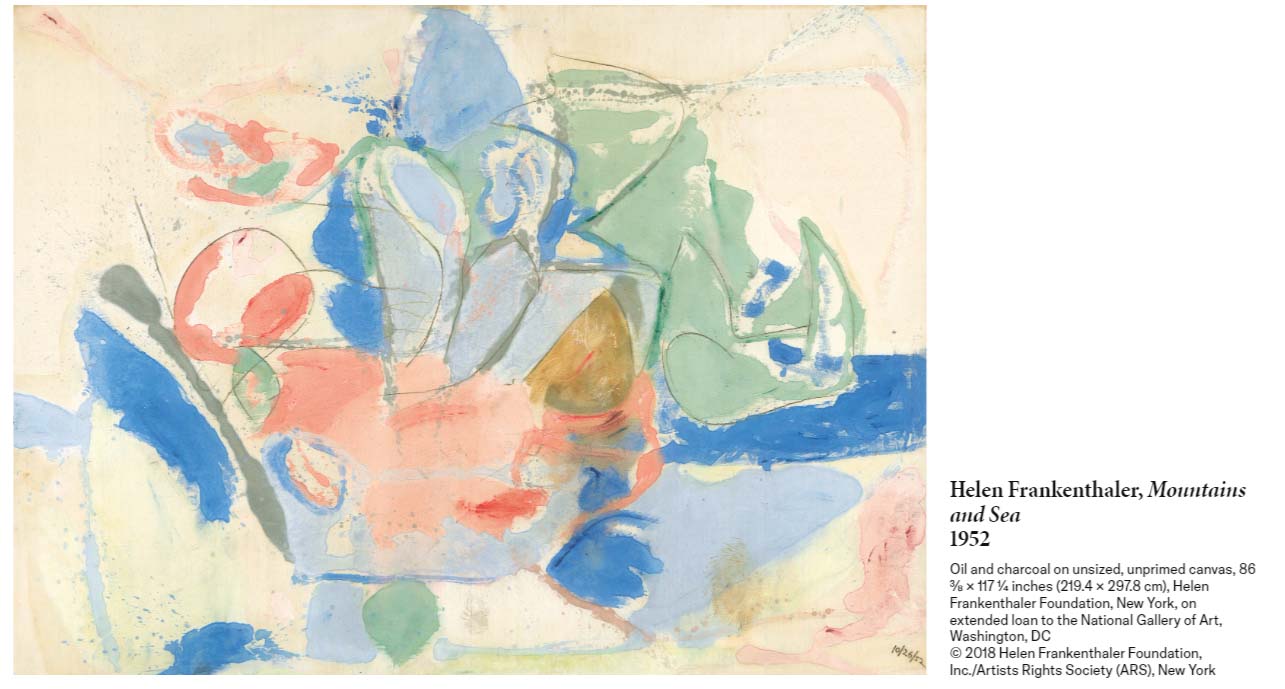
Julie Mehretu combines architectural drawing, calligraphic marks, and digital layering. Stadia II, in the MoMA collection, references arenas, mass gatherings, and global systems. Her work mirrors fast digital communication, migration, and political structures, making her one of the most influential painters of the 21st century.
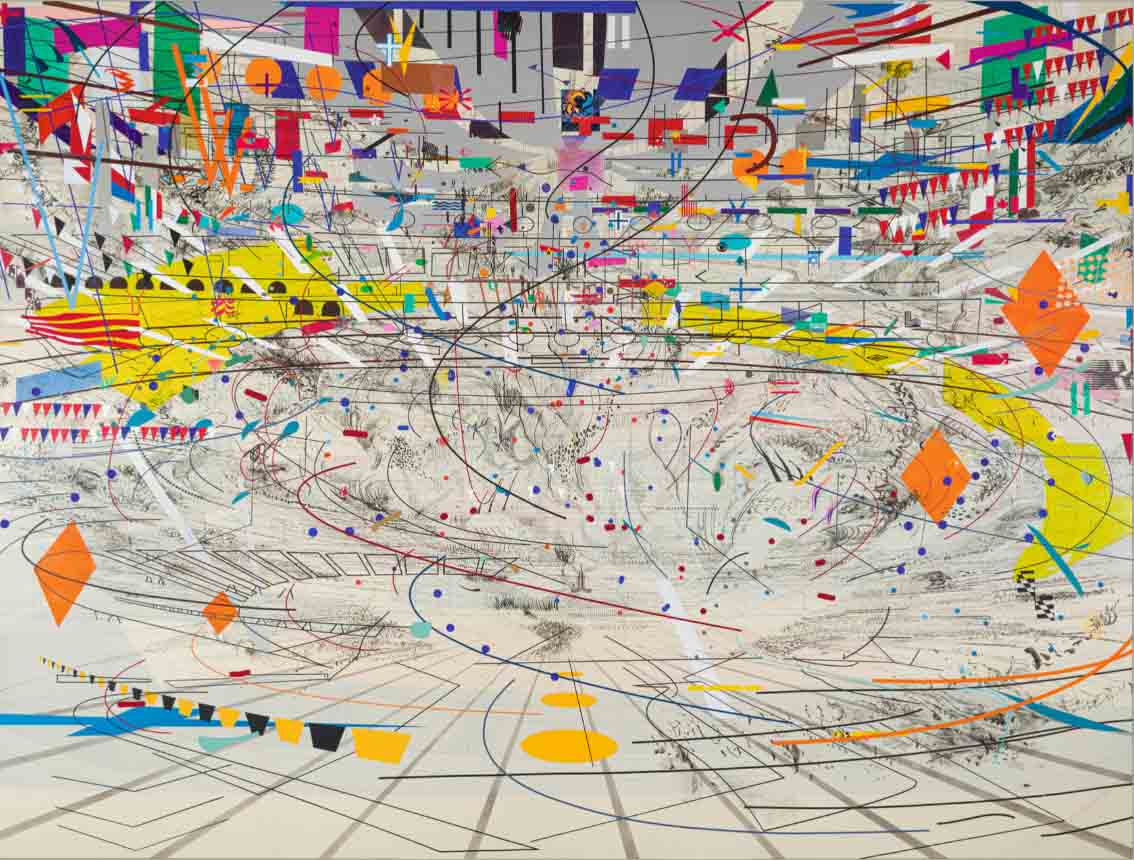
Rashid Johnson uses thick red pigment, scratches, and repeated marks to explore psychological tension and identity. Anxious Red Painting appears emotional despite its abstraction. His works are represented in major U.S. collections and widely featured in contemporary art media.
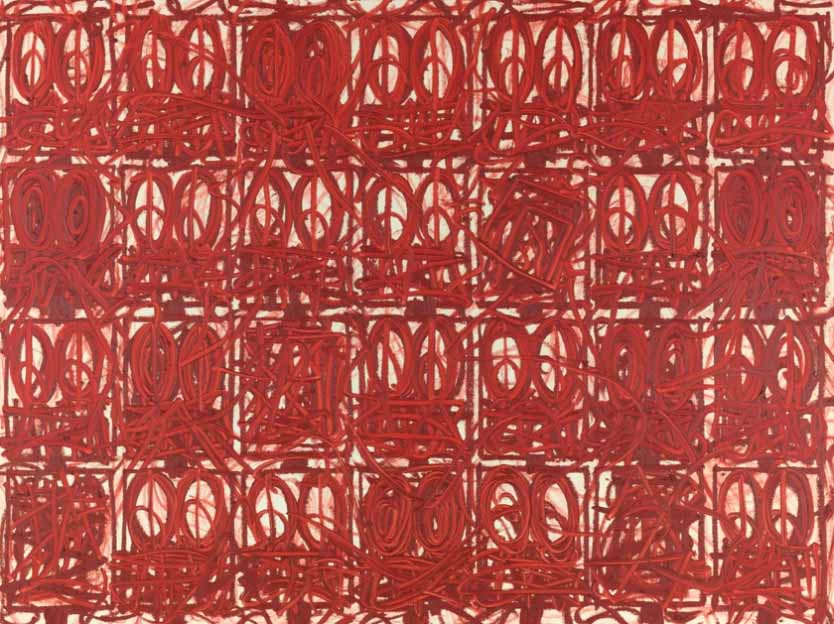
Sarah Crowner works with sewn panels of solid color. Folded Composition joins crisp geometric shapes with thread instead of paint alone, creating shadow and texture. She frequently collaborates with architects and produces large public installations, blending fine art with craft.

Tomashi Jackson merges painting, photography, and printmaking into layered surfaces. Violet Exchange uses transparent color fields and archival images. Jackson’s participation in major biennials expanded her international influence. She represents a generation using research, technology, and cultural history to push abstraction forward.
This list includes classical masterpieces and newer work by living artists. Abstraction now spans generations and regions. Designers apply abstract motifs in fashion, architecture, and digital branding. Collectors value versatility—abstract works fit homes, offices, and public spaces. Online visibility is also crucial, with artists using platforms like Instagram, Artsper, and Artsy. Virtual exhibitions and online fairs make the genre more accessible than ever.
Art advisors report strong demand for geometric abstraction, color-field painting, and mixed-media works. Many buyers prefer cool abstract paintings because they feel timeless. Contemporary artists experiment with resin, fabric, recycled material, digital transfers, and industrial pigments. Some adopt sustainable studios; others mix AI-generated patterns with hand-painted layers. These innovations show that abstraction evolves through technology, ecology, and global exchange.
Historic surveys often emphasized European men, but the 2025 landscape is more inclusive. Women, artists of color, and transnational voices shape museum collections and major exhibitions. Abstraction creates space for identity and interpretation without direct portraiture. Institutions and magazines boost visibility, proving the movement’s openness to new perspectives.
Abstract painting never settles into a single definition. Artists use color, geometry, gesture, and material to ask what a painting can be. This list spans more than a century, from early experiments to hybrid digital surfaces. As long as artists push medium and meaning, abstraction will remain central to contemporary culture.
Hi, I’m Philo, a Chinese artist passionate about blending traditional Asian art with contemporary expressions. Through Artphiloso, my artist website, I share my journey and creations—from figurative painting and figure painting to floral oil painting and painting on landscape. You'll also find ideas for home decorating with paint and more.

1. What makes the best abstract art important today?
It offers strong composition, emotional depth, and innovative technique without relying on recognizable subjects.
2. How do famous abstract artists influence 2025 trends?
They expand materials, connect personal history with visual language, and appear in major museums, media, and digital platforms.
3. Why are cool abstract paintings popular for interiors?
They complement minimalist, industrial, and contemporary spaces, adding color and motion without literal imagery.
4. What separates historic masterpieces from contemporary abstract art?
Historic works built the foundation; contemporary pieces introduce digital tools, cultural research, and new surfaces.
5. What defines popular abstract artists in 2025?
They combine creativity, craft, and relevance through exhibitions, online visibility, and experimental methods.
